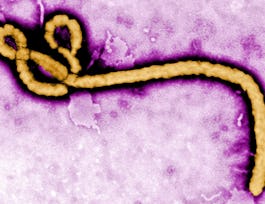Epidemiological research is ubiquitous. Even if you don’t realise it, you come across epidemiological studies and the impact of their findings every single day. You have probably heard that obesity is increasing in high income countries or that malaria is killing millions of people in low income countries. It is common knowledge that smoking causes cancer and that physical activity is protective against heart disease. These facts may seem obvious today, but it took decades of epidemiological research to produce the necessary evidence. In this course, you will learn the fundamental tools of epidemiology which are essential to conduct such studies, starting with the measures used to describe the frequency of a disease or health-related condition. You will also learn how to quantify the strength of an association and discuss the distinction between association and causation. In the second half of the course, you will use this knowledge to describe different strategies for prevention, identify strengths and weaknesses of diagnostic tests and consider when a screening programme is appropriate.



Measuring Disease in Epidemiology
This course is part of Epidemiology for Public Health Specialization

Instructor: Filippos Filippidis
Sponsored by ITC-Infotech
25,369 already enrolled
(755 reviews)
Recommended experience
What you'll learn
Calculate and interpret appropriate measures in order to describe disease frequency, association and attributable risk for given scenarios.
Calculate sensitivity, specificity, positive and negative predictive values, in order to interpret these values in the context of screening.
Skills you'll gain
Details to know

Add to your LinkedIn profile
7 assignments
See how employees at top companies are mastering in-demand skills

Build your subject-matter expertise
- Learn new concepts from industry experts
- Gain a foundational understanding of a subject or tool
- Develop job-relevant skills with hands-on projects
- Earn a shareable career certificate


Earn a career certificate
Add this credential to your LinkedIn profile, resume, or CV
Share it on social media and in your performance review

There are 4 modules in this course
One of the main purposes of epidemiology is to describe the frequency of diseases or other conditions that are important for the health of populations. Depending on the circumstances, there are different types of measures that you can use to do this. In this module, you will learn to calculate measures such as the prevalence, odds, cumulative incidence and incidence rate. We will highlight what they have in common as well as their differences. By the end of the module, you will be able to select and calculate the appropriate measure of frequency in a variety of contexts.
What's included
5 videos9 readings1 assignment2 discussion prompts1 plugin
This module starts by introducing the distinction between association and causation, which is critical not only for epidemiology, but for research in general. Subsequently, you will learn all the main measures epidemiologists use to quantify association; mainly risk and rate differences and risk, rate and odds ratios. Over the course of this module, you will develop the skills to calculate and interpret measures of frequency. This is not enough by itself though, so you will also learn to select the most appropriate measure depending on the research question and the availability of data.
What's included
5 videos5 readings2 assignments1 discussion prompt
Published studies often report the magnitude of the association they investigate, which is clearly important when trying to identify causal links. Sometimes though, what we are interested in is the impact of a factor or of a disease on the population as a whole. This is when the concepts of attributable risk and of population attributable risk come in handy. These measures quantify the population impact of a health-related factor and therefore are particularly useful for health policy. Equipped with this knowledge, you will then explore the two main approaches to disease prevention: the high-risk and the population approach.
What's included
3 videos4 readings1 assignment1 discussion prompt
Diagnostic tests are used all the time to determine whether an individual is sick or not. However, these tests are far from perfect. Quantifying their imperfection allows us to understand their limitations and interpret their results. In this module, you will learn to calculate and interpret the metrics used to do this, including sensitivity, specificity, positive and negative predictive values. Using these metrics, you will subsequently learn to evaluate whether a screening programme can be effective or not considering its methodological and practical aspects.
What's included
6 videos6 readings3 assignments1 plugin
Instructor

Offered by
Why people choose Coursera for their career




Learner reviews
755 reviews
- 5 stars
82.29%
- 4 stars
13.21%
- 3 stars
2.50%
- 2 stars
0.39%
- 1 star
1.58%
Showing 3 of 755
Reviewed on Feb 1, 2022
The course has been very exciting and insightful. The lecturers did a great job providing understandable notes and clarifying the concepts. I appreciate their efforts.
Reviewed on Sep 26, 2021
Thank you for the excellent course materials, quizzes, and discussions. This was a very complete course, absolutely worth the time and effort.
Reviewed on Dec 23, 2021
Excellent course with a good conceptual understanding of basic concepts of epidemiology and clinical research. Highly recommended for Health-care professionals.
Recommended if you're interested in Health

Johns Hopkins University

Johns Hopkins University

Emory University

University of Minnesota

Open new doors with Coursera Plus
Unlimited access to 10,000+ world-class courses, hands-on projects, and job-ready certificate programs - all included in your subscription
Advance your career with an online degree
Earn a degree from world-class universities - 100% online
Join over 3,400 global companies that choose Coursera for Business
Upskill your employees to excel in the digital economy


